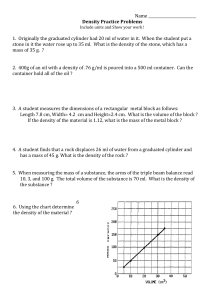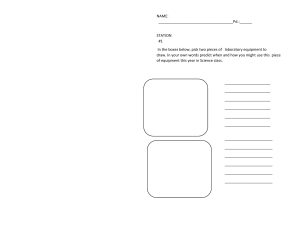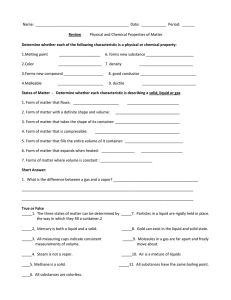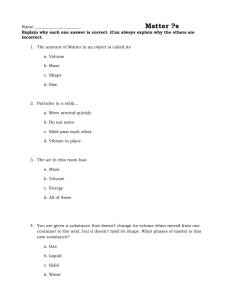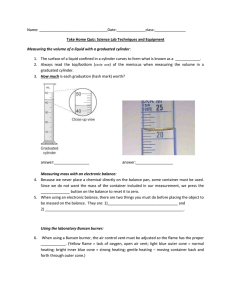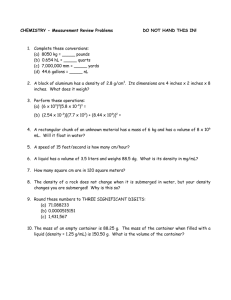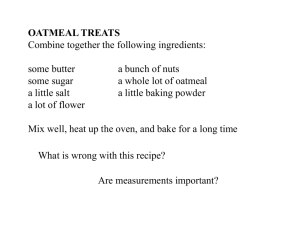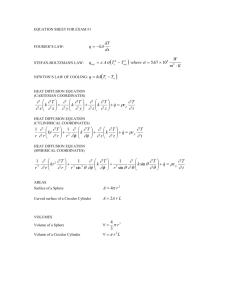Density Notes Chemistry 1
advertisement
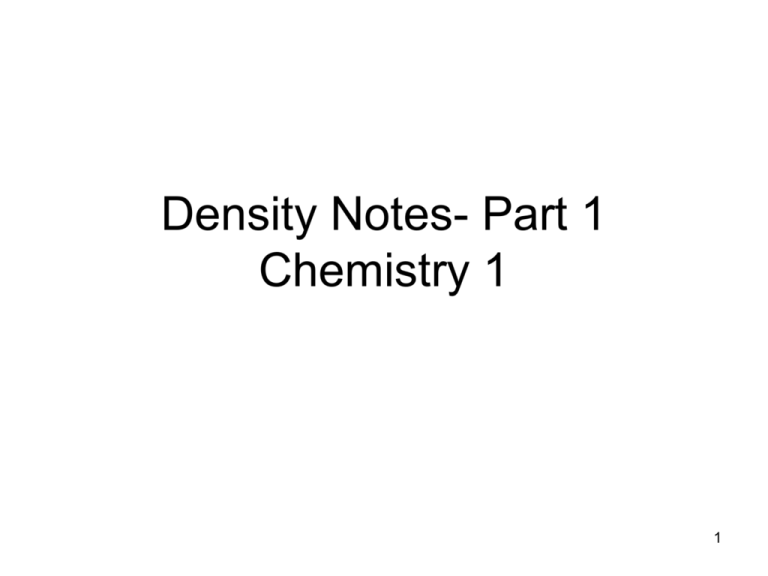
Density Notes- Part 1 Chemistry 1 1 Density • The compactness and size of the molecules or particles of a substance – the more compact or squished together the molecules are and the more mass the particles have, the larger the density • The relationship between an object’s MASS and VOLUME • Density is a characteristic property of substances and can be used to help identify substances. 2 • MASS is the amount of matter an object contains – Mass does not change unless you add or remove matter • VOLUME is the amount of space an object occupies • Density = Mass Volume 3 Finding Mass and Volume • Mass is always determined using a balance. – Triple beam or electronic • Remember you always must take into account the mass of the container one of two ways: – Tare the balance (zero out the container’s mass) – Or measuring the mass of the container and then subtracting it out later from the total mass of the container + substance 4 • Volume can be found in different ways, depending on the substance or object. 5 • Liquid volumes are read in volumetric lab equipment, like a graduated cylinder or pipet. 6 • The dimensions of regularly shaped objects may be measured and then the volume found by using a formula such as V=l x w x h. 7 • The volume of irregularly shaped objects may be found by water displacement • measure a given amount of water in a graduated cylinder • add the object and read the volume of the water + object • then find the volume of the object by subtraction. Amount of H2O with object = ______ About of H2O without object = ______ Difference = Volume = ______ 8 Units • Mass units are usually grams (g) • Volume units are usually – Milliliters (mL) or cubic centimeters (cm3) for liquids or solids • 1mL = 1cm3 – L for gases • Density units will always be a Mass unit volume unit like g/mL or g/cm3 or g/L 9 Using the density formula • D=m/v can be used to solve for density if the mass and volume is known • What if the density is known, and you need to find the mass or volume? – Just rearrange the formula to solve for the unknown m=Dv or v=m/D 10 examples A 10.0mL sample of a sugar solution has a mass of 5.0g. What is the density of the sugar solution? 11 • A piece of metal has a mass of 114g and a volume of 10.0cm3. What is the density of the metal? 12 • A substance’s density is known to be 5.6g/mL. You have a 25.0mL sample of the substance. What is the mass of the sample? 13
